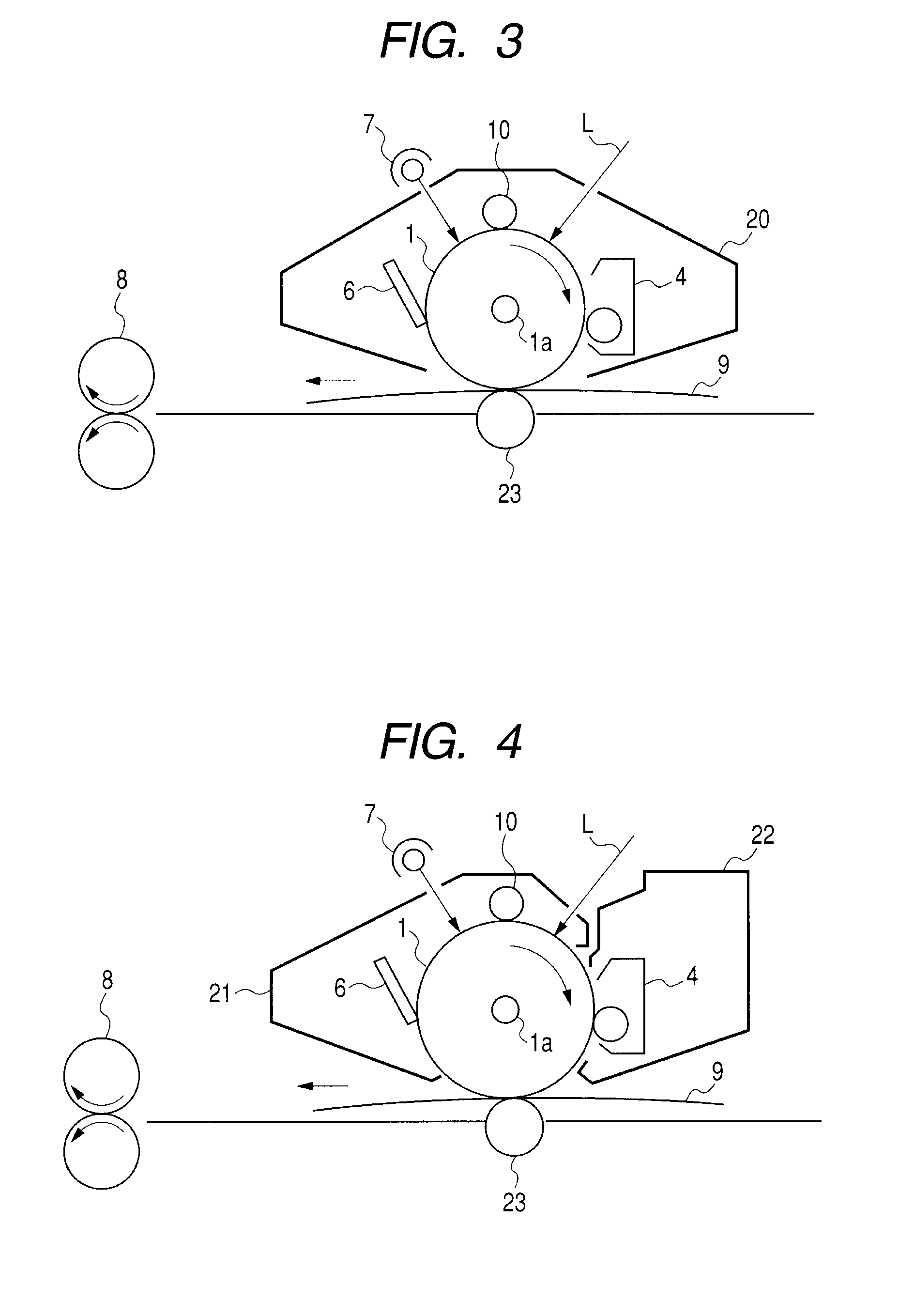AZO pigment, electrophotographic photosensitive member, process cartridge, and electrophotographic apparatus
a technology of electrophotography and pigment, applied in the direction of disazo dye, anthracene dye, instruments, etc., can solve the problem that the performance of the electrophotosensitive member containing these azo pigments only in the charge generation layer cannot be sufficiently balanced, and achieves small potential variation, small potential variation, and small potential variation
- Summary
- Abstract
- Description
- Claims
- Application Information
AI Technical Summary
Benefits of technology
Problems solved by technology
Method used
Image
Examples
synthetic example 1
Synthesis of Exemplified Compound (1)
[0106]700 mL of ion-exchange water (electric conductivity, 1×10−4 S / m or less; the same shall apply hereinafter), 102.5 mL (1.13 mol) of concentrated hydrochloric acid and 30.0 g (0.14 mol) of 4,4′-diaminobenzophenone were placed in a 2-liter beaker and cooled to 0° C. Into this solution, a solution where 20.48 g (0.30 mol) of sodium nitrite is dissolved in 51 mL of ion-exchange water was dropped over 23 minutes while the resulting solution was maintained at a solution temperature between 0° C. or more and 5° C. or less. After dropping, the resulting solution was stirred for 60 minutes and then 3.2 g of activated carbon was added to the resulting solution, which was then stirred for 5 minutes and filtered under suction. While the filtrate obtained was maintained between 0° C. or more and 5° C. or less, a solution where 108.6 g (0.99 mol) of sodium borofluoride was dissolved in 320 mL of ion-exchange water was dropped to the filtrate over 20 minut...
synthetic example 2
Synthesis of Exemplified Compound (2)
[0120]1,500 mL of ion-exchange water, 45.6 mL (0.50 mol) of concentrated hydrochloric acid and 18 g (0.062 mol) of 4,4′-diaminobenzoylbiphenyl were placed in a 3-liter beaker and cooled to 0° C. Into this solution, a solution where 9.045 g (0.13 mol) of sodium nitrite was dissolved in 22.5 mL of ion-exchange water was dropped over 26 minutes while the resulting solution was maintained at a solution temperature of −1 to 3° C. After that, the resulting solution was stirred for 60 minutes at a solution temperature of 0 to 5° C., and then 1.5 g of activated carbon was added to the resulting solution, which was then stirred for 5 minutes and filtered under suction. While this filtrate was maintained at a solution temperature of 0 to 5° C., a solution where 23.993 g (0.22 mol) of sodium borofluoride was dissolved in 80 mL of ion-exchange water was dropped to the filtrate over 17 minutes under stirring and then further stirred for 40 minutes. The crysta...
synthetic example 3
Synthesis of Exemplified Compound (3)
[0127]100 mL of N,N-dimethylformamide was placed in a 300-mL beaker and 2.850 g of the coupler (1) above was dissolved in the solution, which was then cooled to a solution temperature of 0° C. Next, 1.00 g of the borofluoride (3) below was added thereto and then 0.546 g of N-methylmorpholine was dropped thereto over 2 minutes.
[0128]
[0129]After that, the resulting solution was stirred for 2 hours at 0 to 5° C., stirred further for 1.5 hours at room temperature and then filtered under suction. The filtration residue obtained was dispersed and washed for 1.5 hours with 100 mL of N,N-dimethylformamide and filtered. This series of dispersion and washing and filtration was repeated one more time. Next, the resulting filtration residue was dispersed and washed with 200 mL of ion-exchange water for 1.5 hours and filtered. This series of dispersion and washing and filtration was repeated two more times. Next, the resulting filtration residue was freeze-dr...
PUM
| Property | Measurement | Unit |
|---|---|---|
| height | aaaaa | aaaaa |
| height | aaaaa | aaaaa |
| height | aaaaa | aaaaa |
Abstract
Description
Claims
Application Information
 Login to View More
Login to View More - R&D
- Intellectual Property
- Life Sciences
- Materials
- Tech Scout
- Unparalleled Data Quality
- Higher Quality Content
- 60% Fewer Hallucinations
Browse by: Latest US Patents, China's latest patents, Technical Efficacy Thesaurus, Application Domain, Technology Topic, Popular Technical Reports.
© 2025 PatSnap. All rights reserved.Legal|Privacy policy|Modern Slavery Act Transparency Statement|Sitemap|About US| Contact US: help@patsnap.com



